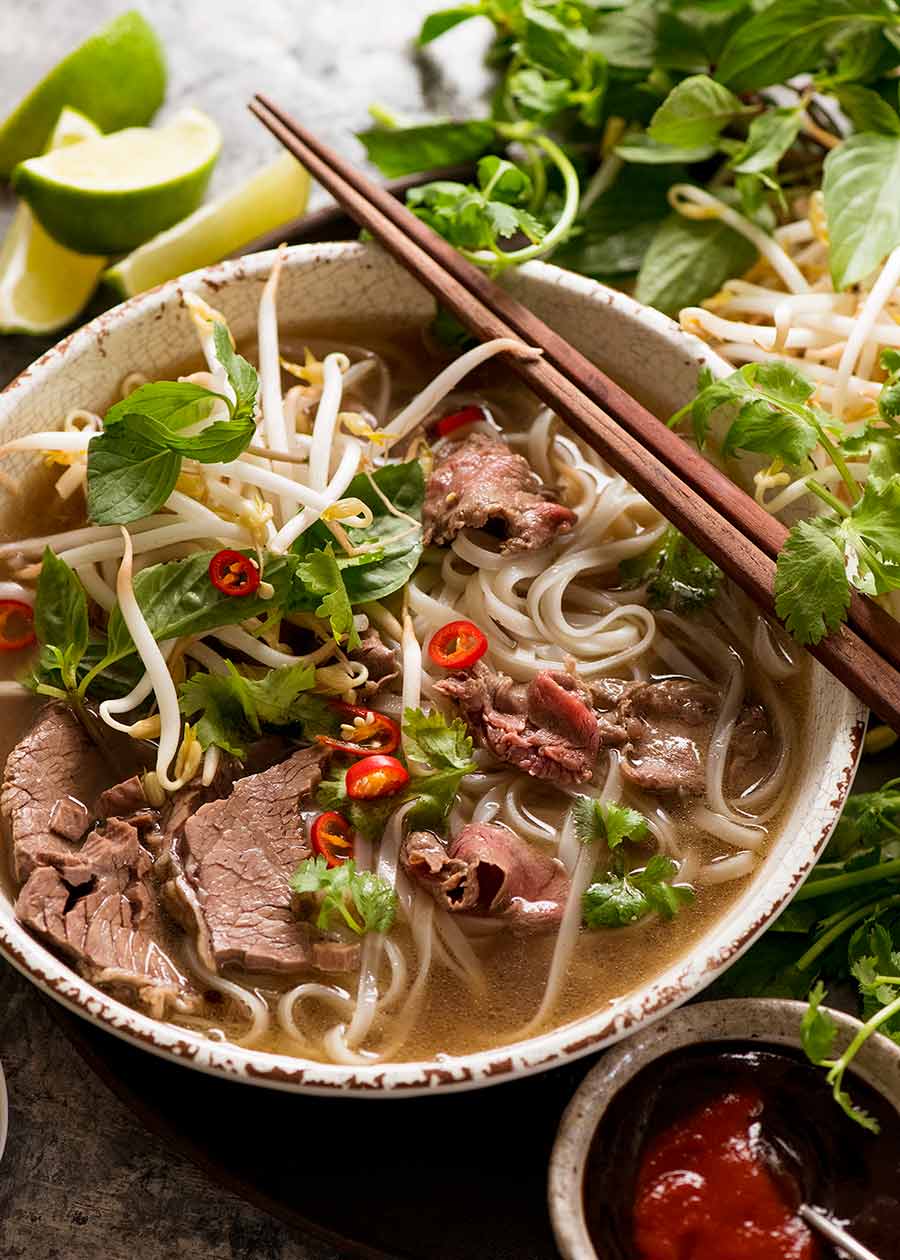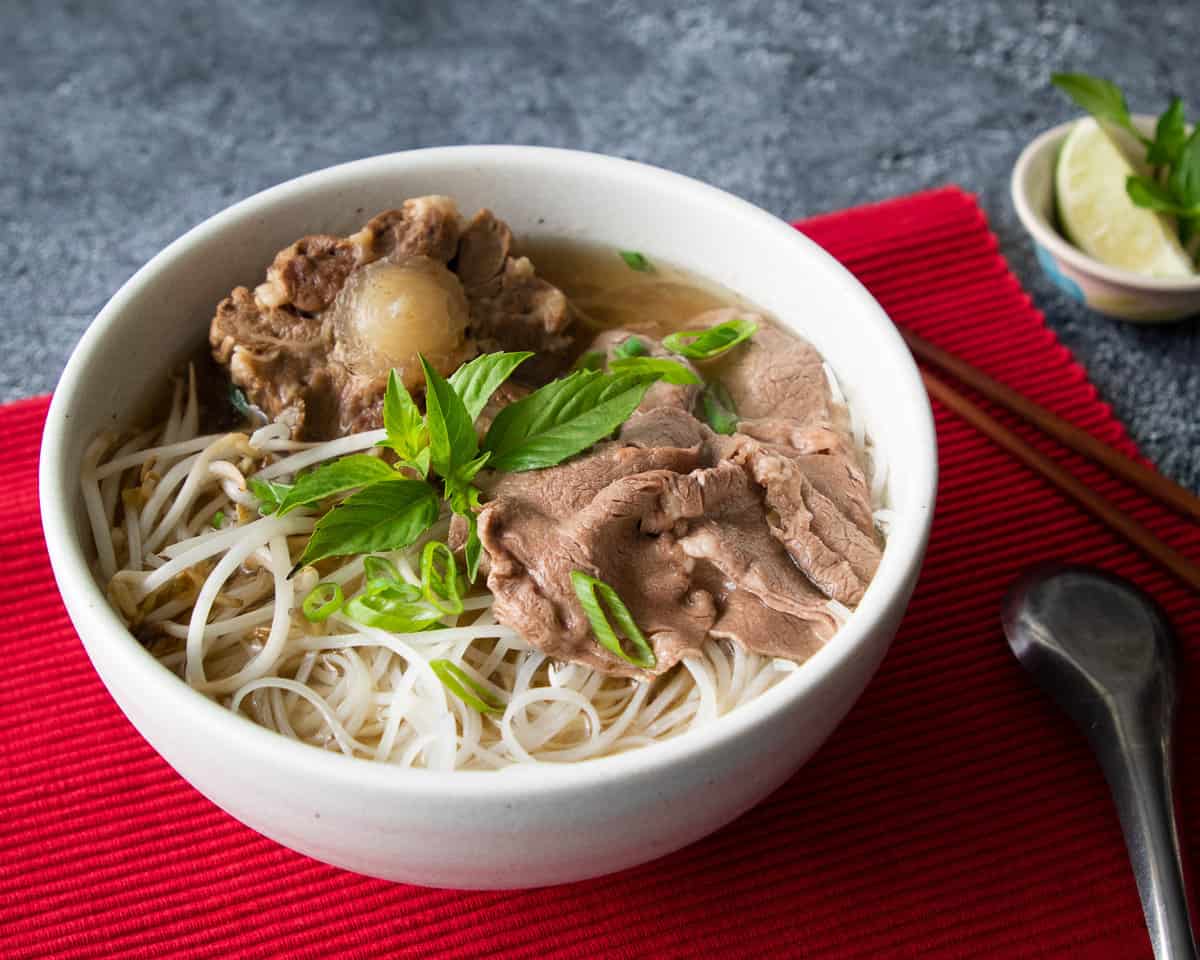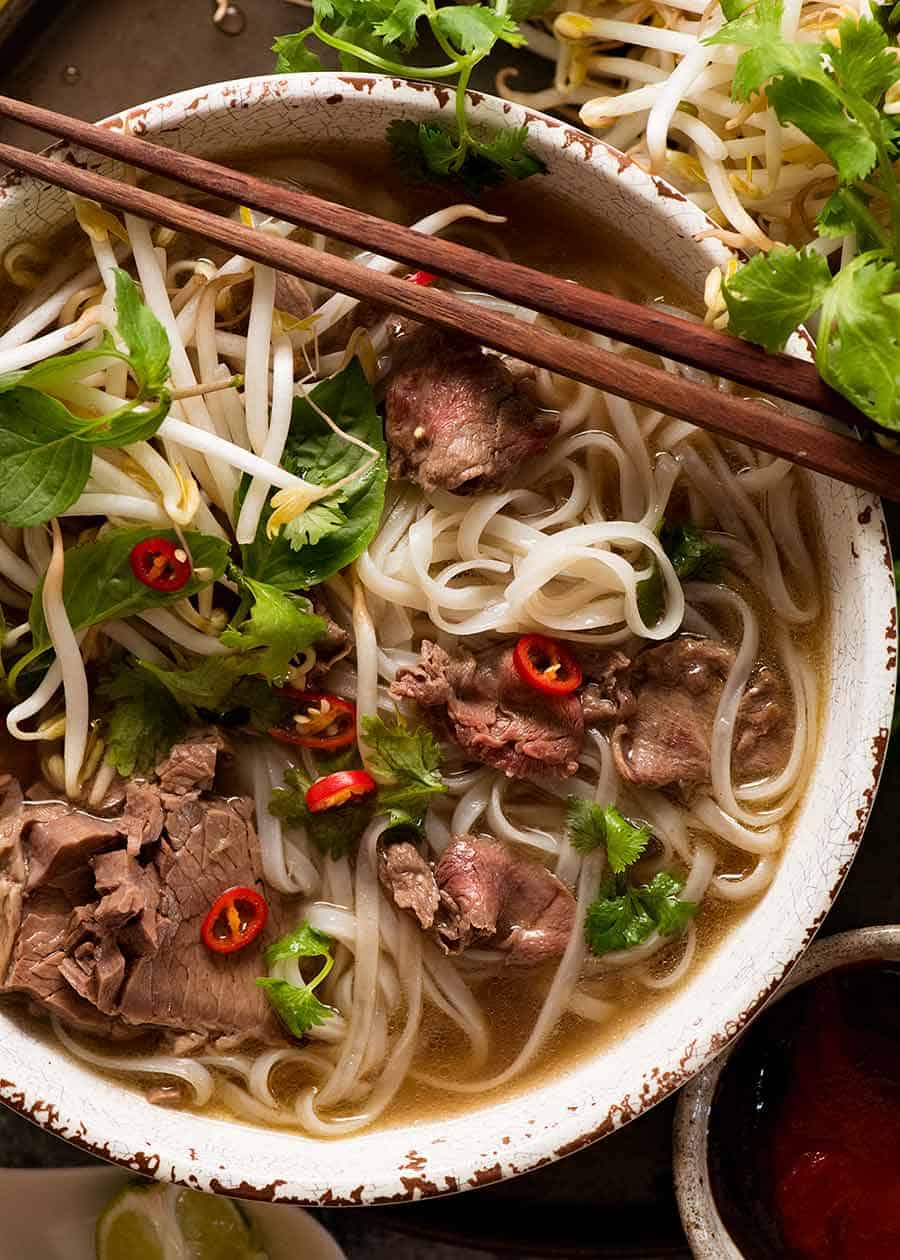Pho Kim Long - A Look At Vietnam's Beloved Noodle Soup
Many people around the world have come to appreciate the unique taste of Vietnamese noodle soup, often known simply as Pho. This warm, comforting dish, a true symbol of Vietnamese cooking, captures the hearts of those who try it, offering a blend of flavors that feels both familiar and exciting. It is, to be honest, a kind of food that brings people together, sharing a common delight in its rich broth and tender ingredients. You see it everywhere in its home country, a staple that defines daily life for many.
Yet, the journey of this beloved soup beyond its native land presents a rather interesting story. While it enjoys widespread popularity and is, you know, easily found in the streets and small shops across Vietnam, its reception in other places can be quite different. We have seen instances, for example, where establishments serving this very dish have found it difficult to gain a foothold, even in large cities. One such place, a shop in a big shopping area, apparently closed its doors after not seeing enough people come through.
This situation makes you wonder, doesn't it? What makes a dish so universally loved in one place struggle to find its footing elsewhere? It is almost as if there are unseen elements at play, things that go beyond just the recipe itself. We will, in this piece, explore some of the characteristics of this famous Vietnamese soup, looking at its origins, its linguistic background, and some of the broader ideas that help us appreciate its presence, perhaps even at a place like pho kim long.
Table of Contents
- The Heart of Vietnamese Cuisine - What makes Pho special?
- Why Does Pho Kim Long Face Challenges Elsewhere?
- What Does "Phở" Mean for Pho Kim Long?
- How Does Understanding Help Pho Kim Long?
The Heart of Vietnamese Cuisine - What makes Pho special?
The national dish of Vietnam, Pho, is a kind of noodle soup that holds a very special spot in the hearts of many. It is a meal that you can find pretty much everywhere you go in Vietnam, from busy street corners to quieter neighborhood eateries. This soup, with its rich broth and fresh additions, is seen as a very characteristic part of Vietnamese food culture. People often speak of it as a comfort food, something that warms you from the inside out, a true taste of home for many, and a delightful discovery for visitors.
What makes this soup so distinct, you might wonder? It comes down to a few key things, so to speak, that really set it apart. The noodles themselves play a big part. For an authentic experience, it is usually suggested that you pick out the flat, somewhat slender noodles, which are often called "Vietnamese style rice noodles." These noodles have a particular texture that, you know, soaks up the broth's goodness just right, making each mouthful a satisfying one. The way they are prepared, often fresh, adds a chewiness that is very much appreciated by those who enjoy this kind of food.
Beyond the noodles, the flavor of the soup itself is, very important. It is a broth that has been carefully prepared, often simmered for a long time to get its deep, savory taste. Then, you have the fresh additions that go into the bowl. These can include thin slices of meat, fresh herbs, and various garnishes that bring a burst of freshness to the warm liquid. It is a balance of flavors and textures, really, that makes the dish what it is. The experience of eating it is about more than just the taste; it is about the feeling of warmth and the fresh, aromatic qualities that fill the air as you eat.
The Pho Kim Long Way - Noodle Choices and Flavor Hints
When thinking about making or enjoying a bowl of this famous soup, whether it is at home or at a place like pho kim long, there are some small things that can make a big difference. One of the suggestions often given, as mentioned, is to choose the correct type of noodle. The flat, thin rice noodles, those "Vietnamese style" ones, are what people often go for. They are, apparently, the best fit for the soup's overall texture and how it feels when you eat it. Using these noodles helps ensure that the dish has that familiar, authentic feel that people look for.
Another thing to keep in mind, and this is a bit of a warning, has to do with the spice level. If you happen to be adding bird's eye chili, for instance, it is worth knowing that these little peppers pack quite a punch. Their heat, you see, is very strong. So, it is usually not a good idea to put too much in your bowl. If you do, the entire soup, including the broth, might become too spicy for most people to enjoy comfortably. It is all about finding that right balance, that perfect amount of heat that complements the soup without taking over the whole experience. Getting this balance right is key to a truly enjoyable bowl, a principle that any good kitchen, perhaps even at pho kim long, would certainly follow.
Why Does Pho Kim Long Face Challenges Elsewhere?
The popularity of Pho in Vietnam is, well, something that is talked about a lot. It is said to be very popular there, with shops serving it found on practically every street corner. Yet, when this dish travels to other places, its reception can be quite different. Take, for example, the situation in a certain country where a store selling Vietnamese Pho opened in a large shopping center. This particular store, it turned out, did not attract many customers and, in the end, had to close its doors. Now, if you check maps, there are, apparently, not many Pho restaurants left in that entire country.
This situation makes one wonder why a dish that is so celebrated and widely enjoyed in its homeland might struggle to find the same level of success in a different cultural setting. It is not just about the food itself, but perhaps about how it fits into the local eating habits, the availability of specific ingredients, or even the general awareness of what Vietnamese food is all about. The local taste preferences and what people are used to eating can play a very big part in whether a new kind of food catches on. It is a complex issue, really, that goes beyond just serving a tasty bowl of soup.
There might be many reasons for this, you know, kind of disconnect. Maybe the way it is served, or the atmosphere of the place, does not quite match what local diners expect. Or, perhaps, the subtle flavors that make Pho so special in Vietnam do not quite translate to palates that are used to other kinds of seasonings. It is a bit of a puzzle, how something so beloved in one place can be less embraced in another. This difference in acceptance highlights how deeply food is tied to culture and local preferences, something that any establishment, including one that might be called pho kim long, would need to consider.
The Pho Kim Long Experience - Beyond the Bowl
When people think about Vietnamese food, it is often Pho that comes to mind first, and for good reason. It is, basically, a standout dish. But, as a matter of fact, Vietnam offers a whole array of other foods that can surprise and delight. There are many other dishes that are just as characteristic and enjoyable, perhaps even more so for some people. These other foods, you know, often feature fresh ingredients, a balance of sweet, sour, salty, and spicy tastes, and unique textures that make them very memorable. It is a rich and varied cooking tradition that goes far beyond just one type of soup.
So, if someone has had the chance to visit Vietnam, they might have come across these other wonderful foods. They might have experienced the vibrant street food scene, where every stall offers something new and exciting. This broader experience of Vietnamese cooking suggests that while Pho is a great introduction, it is just one piece of a much larger culinary picture. A place like pho kim long, therefore, serves as an entry point, a way for people to experience a small part of a much wider and very interesting food culture. It is a chance to taste something authentic and, perhaps, be inspired to learn more about the country's other delicious offerings.
What Does "Phở" Mean for Pho Kim Long?
Let's clear up something about the word itself, the one that starts with "Phở." This term, in Vietnamese, simply means "noodle" or "powder." So, for most people, when they hear "Phở," they are thinking about those delicious rice noodles. When we talk about Vietnamese soup noodles, it is a dish that is very characteristic of the local cuisine. You can, basically, see it everywhere in Vietnam, in all the small streets and alleys, truly a common sight. It is a food that is deeply woven into the everyday life of the people there, a symbol of their cooking traditions.
The way the word "Phở" is spelled, with the "ph" at the beginning, is actually a bit interesting, too. Most of the time, when you see "ph" in English words, it comes from the Greek letter Φφ, which is called "phi." When Greek words were written using Latin letters, this "phi" often became "ph." This is how we get words like "philosophy," which comes from the Greek word "philosophia." However, it is worth noting that the word "Pho" itself, the one for the noodle soup, does not come from Greek. It has its own distinct origin within the Vietnamese language, which is, you know, quite different from those Greek-derived words. It is just a coincidence in spelling, really.
So, when you see the word "Phở" on a menu, perhaps at a place like pho kim long, you are seeing a direct reference to the noodles that form the core of the dish. It is a simple, straightforward term that carries a lot of cultural weight. It represents a fundamental part of a meal that is enjoyed by millions, a dish that is both simple in its core idea and complex in its flavors. This basic meaning helps connect the dish directly to its main ingredient, making it clear what you are getting when you order it.
The Sound of Pho Kim Long - A Language Lesson
Understanding how "Phở" sounds is a bit like learning a small piece of the Vietnamese language. The pronunciation of [fəː˧˩˧] is, apparently, similar to the first sound you make in the word "photography" in English, but with a longer vowel sound. It is not exactly the same, but it gives you a pretty good idea of how to say it. This little detail helps you, you know, get closer to the authentic way of speaking about the dish, something that could be useful when discussing food, even at a place like pho kim long.
Vietnamese, just like Chinese, is a language that uses tones. This means that the way your voice goes up or down when you say a word can change its meaning. The notation ˧˩˧, for example, tells you about a specific tone change, where the voice starts at a middle level, drops down, and then comes back up. This tonal aspect is a very important part of speaking Vietnamese correctly. It is, in a way, like music for the voice, where pitch changes are very meaningful. So, when you say "Phở," you are not just saying a sound; you are also giving it a specific tone that makes it the correct word for the noodles.
This linguistic detail, the sound and the tone, adds another layer to appreciating the dish. It shows that food is not just about taste; it is also tied to language and culture in very deep ways. Knowing a little about how the word is said can, you know, make the experience of enjoying Pho even richer. It connects you to the place where it comes from and the people who have been making and eating it for generations. It is a small but meaningful piece of cultural insight, something that adds to the overall appreciation of a dish served at any establishment, including one that might be called pho kim long.
How Does Understanding Help Pho Kim Long?
When we talk about understanding things, whether it is a dish like Pho or something much more complex, platforms that help people share knowledge are very useful. Think about online communities where people ask and answer questions, or where creators share their original work. These places are, basically, built on the idea of helping people share what they know, their experiences, and their thoughts, so that others can find answers to their own questions. This sharing of information creates a pool of collective wisdom, which is, you know, quite valuable.
For example, there are places online where people share illustrations, comics, novels, and art. These are like virtual gathering spots for artists from all over the world, including Japan, China, Korea, and the United States. They come together to talk, to learn from each other, and to show their creative pieces. This kind of interaction helps spread ideas and understanding, allowing people to appreciate different forms of expression. It shows how sharing can make a community stronger and help individuals grow in their own fields. It is a very open way of learning, really, that benefits everyone involved.
This idea of sharing and learning is not just for artists or general questions; it applies to specialized fields too. Consider academic competitions, like those in quantum physics or other high school subjects such as mathematics, chemistry, biology, or computer science. These events bring together bright minds to solve difficult problems. The knowledge gained, and the ways of thinking developed in these areas, are very specific. Even the academic title "PhD," which stands for "Philosophy Doctor," shows how deep learning and inquiry are valued, representing the highest level of scholarly achievement. It is all about pushing the limits of what we know, and sharing those discoveries.
Learning More About Pho Kim Long and Its Place
So, how does all this talk about knowledge sharing and academic pursuits relate to a place that serves Pho, like pho kim long? It is about the idea that deeper appreciation often comes from deeper understanding. Just as people share insights on complex topics or specialized fields, understanding the cultural background, the linguistic nuances, and the journey of a dish like Pho can make enjoying it a richer experience. It is not just about the taste, but about the story behind it, the traditions it carries, and the way it fits into a larger cultural picture. This kind of knowledge, you know, adds a layer of meaning to every spoonful.
Even the challenges faced by Pho restaurants outside of Vietnam, as discussed earlier, become more understandable when viewed through a lens of cultural exchange and adaptation. It is a bit like how academic ideas need to be explained clearly for a wider audience to grasp them. Similarly, a dish needs to connect with local tastes and expectations to succeed in a new environment. This connection between food and culture, and the effort to bridge those gaps, is a very interesting area of thought. It means that a place serving Pho, perhaps even pho kim long, is doing more than just selling food; it is, in a way, sharing a piece of culture, and that takes a certain kind of careful thought and presentation.
Ultimately, whether it is learning about the specific type of noodle, understanding the correct pronunciation of "Phở," or simply recognizing the dish's popularity in its home country versus its reception elsewhere, every piece of information helps build a more complete picture. This broader view allows for a more informed and, you know, perhaps a more respectful appreciation of the dish. It is about seeing Pho not just as a meal, but as a cultural product with its own history, its own language, and its own place in the world. This perspective, in fact, can make every visit to a place like pho kim long, or any Pho spot, a slightly more meaningful one.
This article has explored the beloved Vietnamese noodle soup, Pho, touching upon its deep roots in Vietnamese culture, its specific characteristics like noodle choice and spice considerations, and the surprising challenges it sometimes faces when introduced to new places. We have also looked at the linguistic aspects of the word "Phở" itself, including its meaning and pronunciation, and how the "ph" spelling connects to Greek origins, though not for Pho itself. Finally, we considered how broader ideas of knowledge sharing and understanding, from online communities to academic pursuits, can help us appreciate the cultural journey of a dish like Pho, offering a richer context for enjoying it, even at a place like pho kim long.

Vietnamese Pho recipe | RecipeTin Eats

Aunty's Best Vietnamese Pho Recipe

Vietnamese Pho recipe | RecipeTin Eats